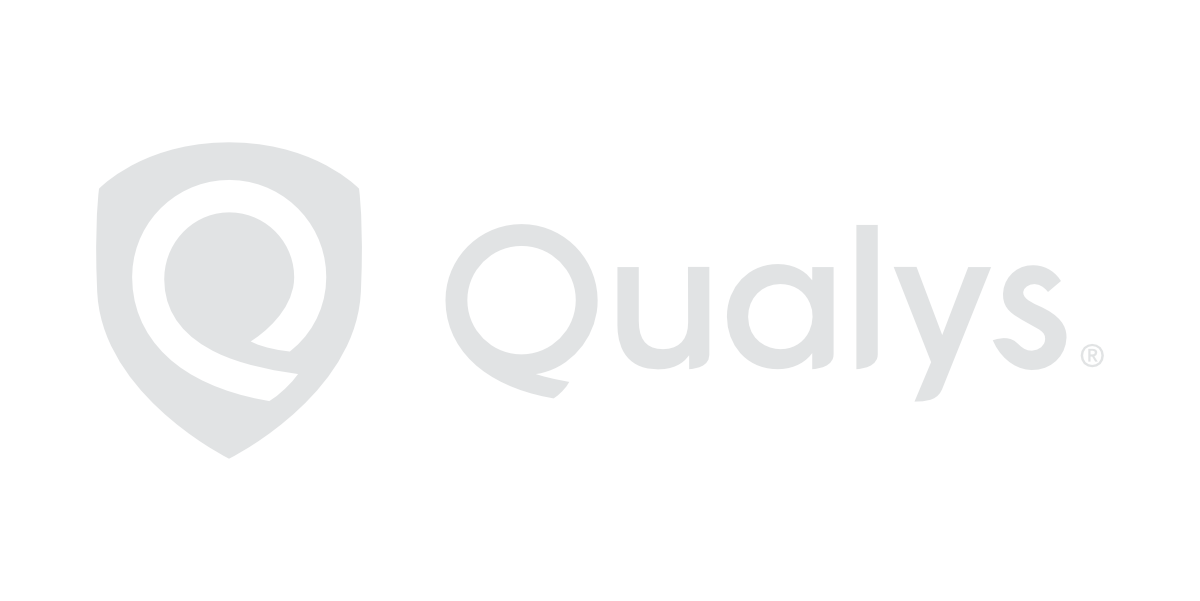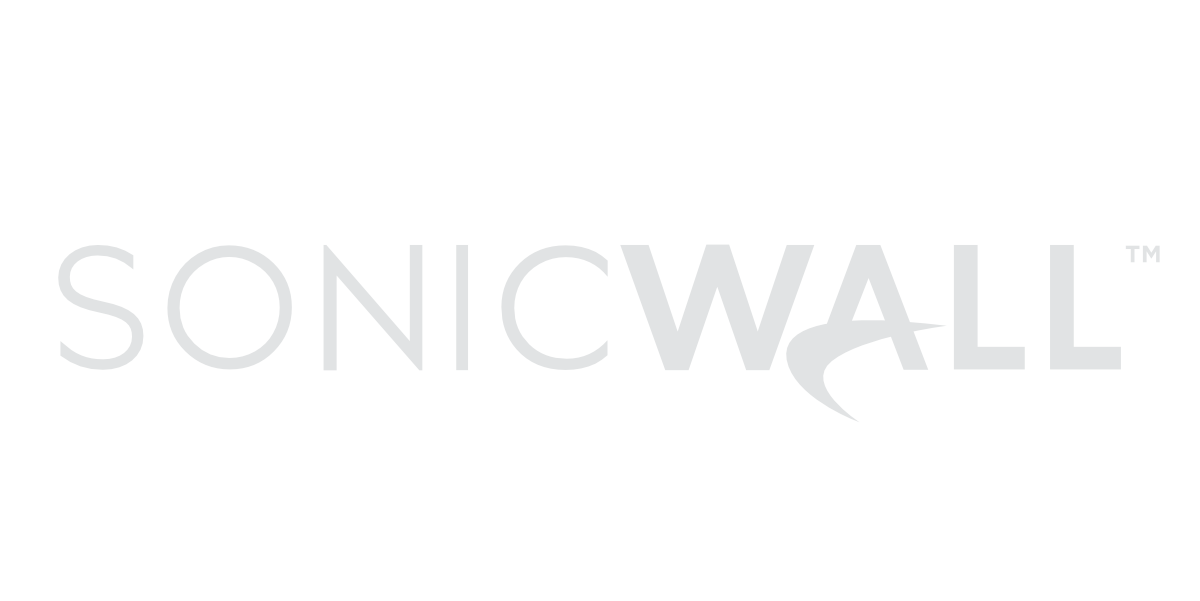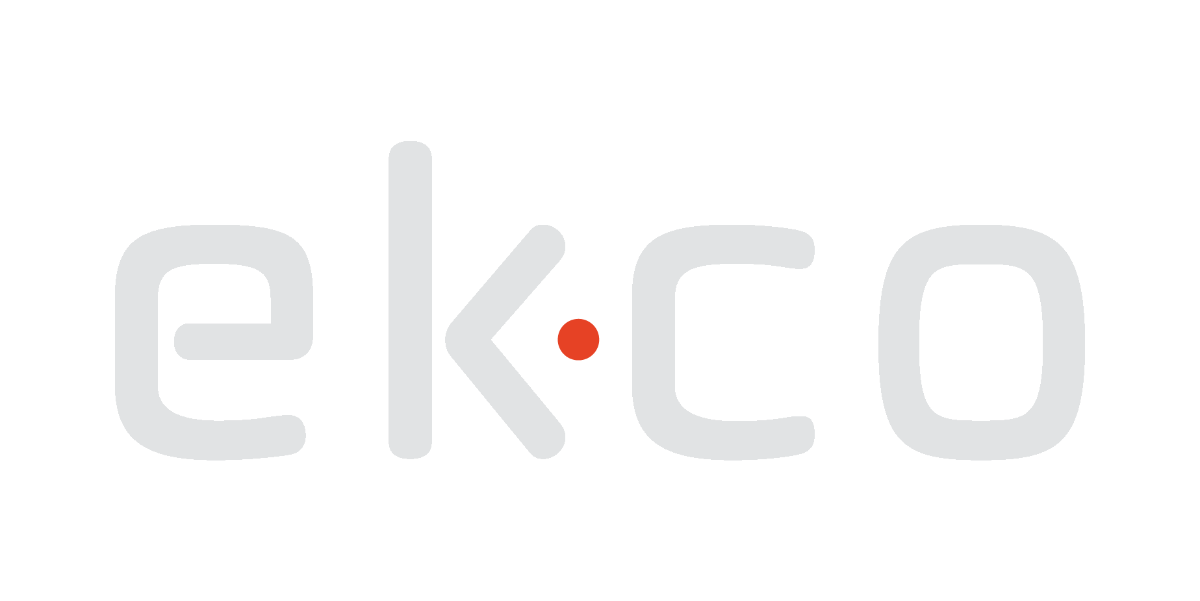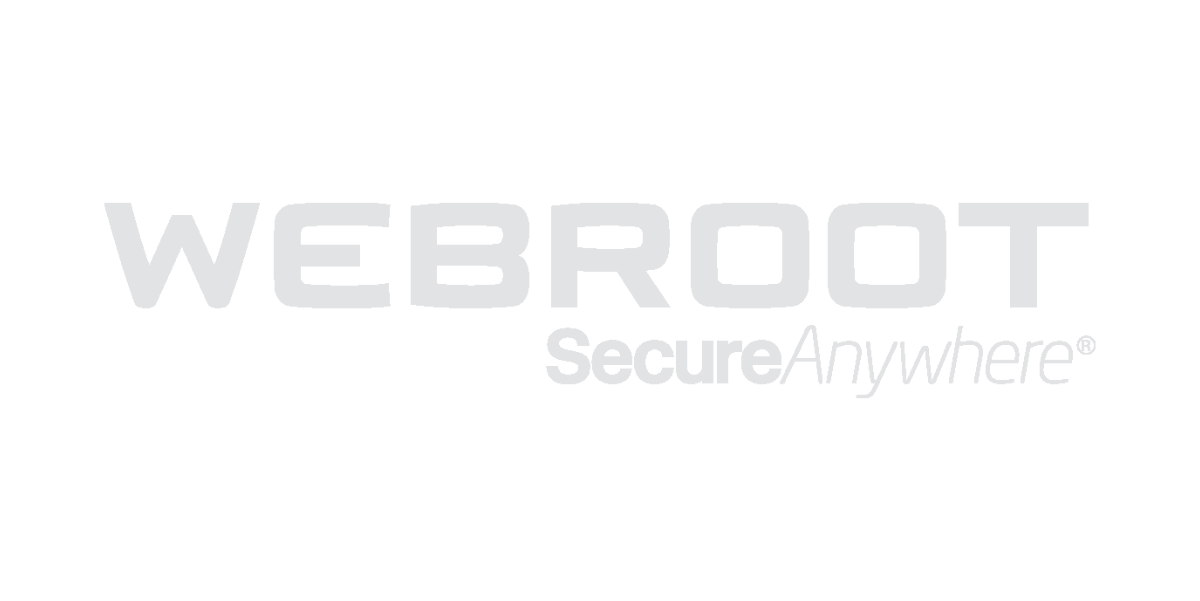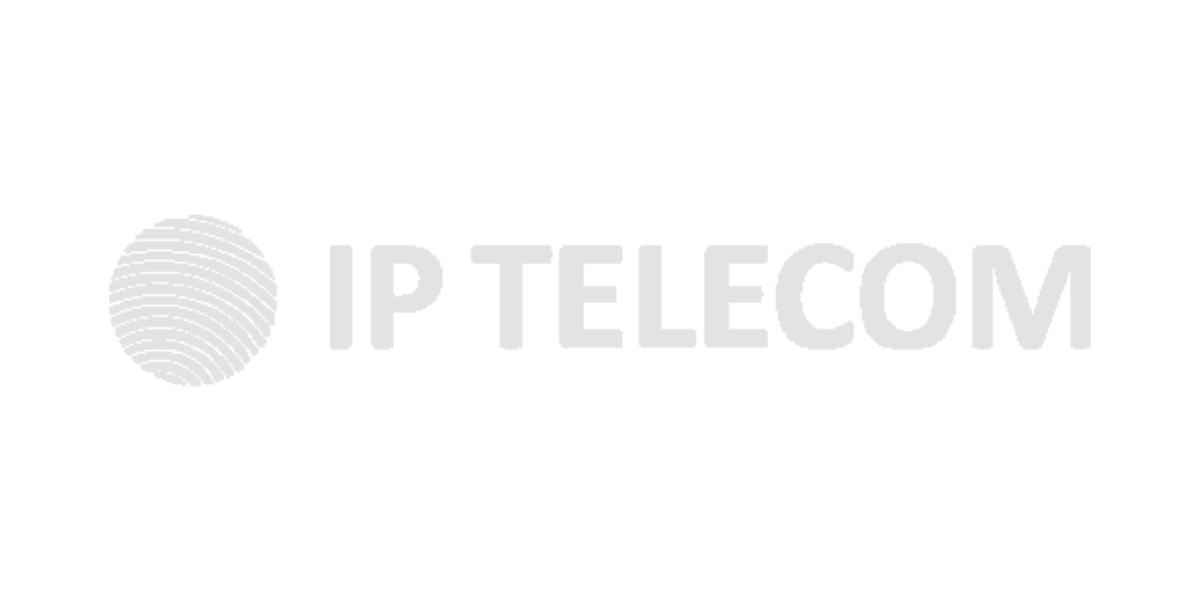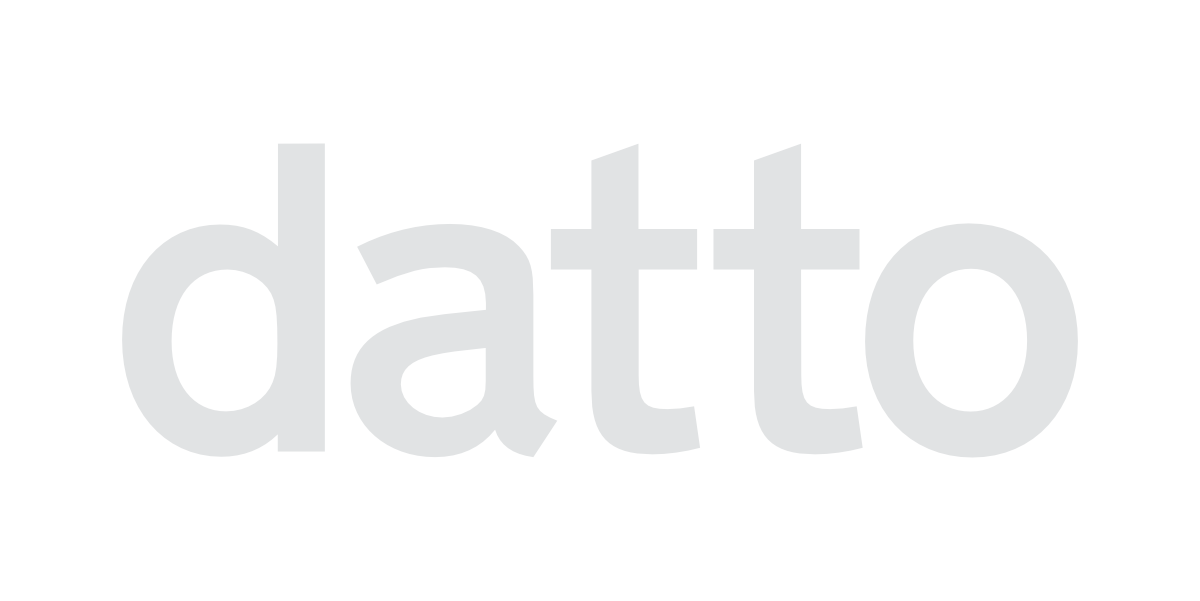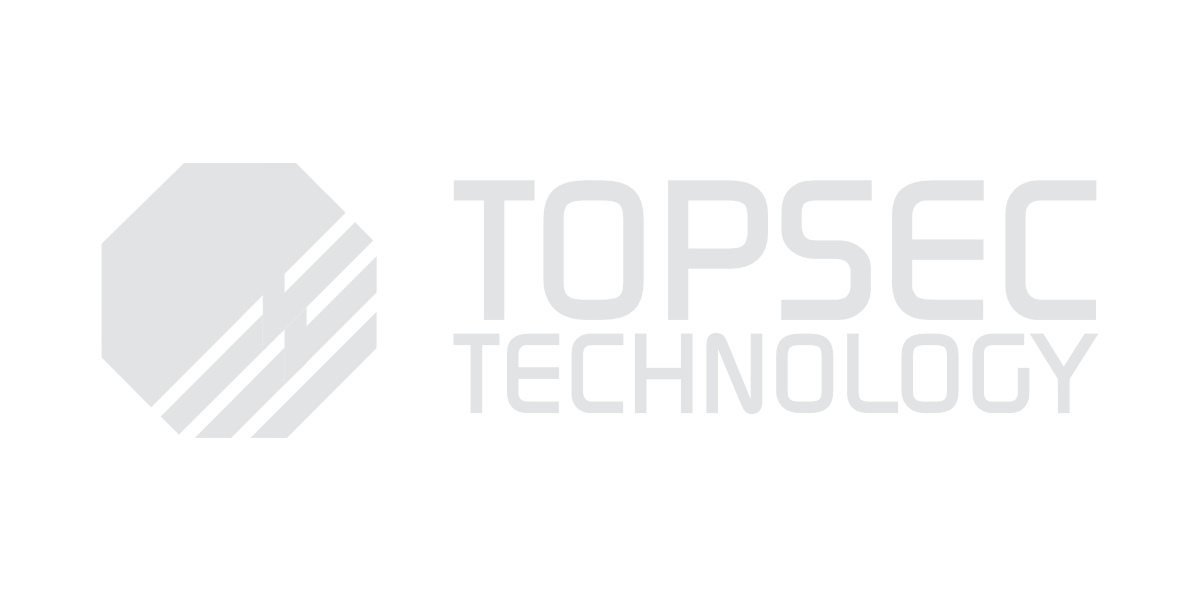Recent incidents have emphasised the crucial necessity to protect information technology infrastructure from cyberattacks, breaches and thefts of sensitive data, and data leaks. Many nonprofits, like their for-profit counterparts, deal with sensitive data, such as refugee registration data, information from human rights investigations, and other highly confidential concerns. This article educates organisations on best practices and dispels some of the myths that may be preventing them from growing.
Executive Summary
It’s no wonder that digital security and privacy compliance are top of mind for many nonprofit leaders today. Cyber threats have never been so prevalent and data privacy issues so complex.
In the past, cybersecurity and privacy were often low on the list of nonprofit priorities—but times are changing. The stakes for nonprofits are increasingly high. Breaches, compromised data, and cyberattacks can put vulnerable beneficiaries at risk, disrupt nonprofit operations and services, expose nonprofits to liability, and tarnish the reputation nonprofits have so painstakingly built.
As a result, nonprofits are now paying attention. Yet many nonprofits are still unsure how to move forward. They often do not know how best to develop cybersecurity or data protection strategies that meet the evolving needs and challenges of today’s online environment. Even when strategies are put in place, execution is inconsistent. Nonprofits often lack the budget, staffing resources, or management time needed to implement cybersecurity and privacy protections effectively, making their job far harder than it is for for-profit or public sector organisations.
This paper is designed to help nonprofits begin to tackle these challenges and to help them develop into digitally resilient organisations. It identifies key cybersecurity and data protection challenges for nonprofits and outlines possible first steps nonprofits can take to bolster cybersecurity and protect data including a shift to cloud computing, which offers built-in security features, as well as data access and protection systems, that often far exceed what nonprofits could obtain through their own on-premises IT systems. It also lists further resources for readers who want additional information.
After reading this paper, nonprofit leaders will be better able to articulate the importance of cybersecurity and privacy to their key stakeholders, and to communicate how a robust cybersecurity and data protection strategy will ultimately help the individuals and communities nonprofits serve. And they will have a well-marked path to help them move towards the development and implementation of that strategy – to better protect the nonprofit, its staff, its donors, and ultimately the beneficiaries they all seek to serve.
The Cybersecurity and Privacy Needs of Nonprofits
Around the world, nations, cities, and neighbourhoods rely on nonprofit organisations to deliver critical community services, including primary health care, education, housing, emergency response, refugee and immigrant services, and senior services. Nonprofits have increasingly adopted technology to improve their effectiveness and to scale their services to extend their reach. Yet many nonprofit organisations have struggled to focus the same attention on their cybersecurity and data protection planning. This lack of attention could expose nonprofits to potential (and expanding) security and regulatory risks that most nonprofits simply cannot afford.
To minimise this risk, nonprofits should develop strategies to incorporate the concept of resiliency—the ability to withstand natural, manmade, and cyber threats. Specifically, they should work to ensure both the security and privacy of their IT systems to reduce the chance of exposing their beneficiaries, staff, or donors to online attacks. To start, organisations need to ask themselves two fundamental questions:
- Does the organisation have the capacity to protect its staff and beneficiaries from malicious digital attacks
- Is the organisation ready to meet increasingly stringent data privacy standards and understand the serious penalties for compliance failure that nations and donors continue to demand?
Merely by asking these questions, nonprofits can build a head start on protecting their organisation, staff, and beneficiaries. Yet many nonprofits are unsure of exactly how to find the answers. This paper intends to help and outlines:
- Why cybersecurity and data privacy are crucial considerations for any nonprofit,
- The actions necessary for nonprofits to improve their cybersecurity and data privacy measures, and how cloud technologies can support these efforts.
Cybersecurity for Nonprofit Organisations
Recent events have underscored the critical need to actively protect against cyberattacks on information technology systems, intrusions and thefts of sensitive information, and data breaches. Like their for-profit counterparts, many nonprofits handle sensitive information which may include refugee registration data, health data, information on human rights investigations, or other highly confidential matters. Holding such sensitive information can make nonprofits attractive targets for both state and criminal actors. At the same time, malicious actors know that many nonprofits lack the resources to modernise their technology and sufficiently protect themselves, making them easy targets for attack.
NetHope, an international member-based nonprofit that focuses on promoting and supporting technology for nonprofits, commissioned a study which looked at ten of its nonprofit members, all of which are considered well-respected and possess dedicated IT departments. These nonprofits were evaluated on eleven criteria related to cybersecurity and data protection policies and procedures.
Utilising interviews and self-assessment surveys, nonprofits were evaluated on a scale of 1 to 5, where indicated initial maturity and 5 indicated optimised maturity. NetHope evaluators believe that nonprofits need to achieve an intermediate maturity score of 3.8 to be considered to have sufficient cybersecurity infrastructure to adequately respond to the constantly evolving cybersecurity challenges they confront. In the 10 nonprofits evaluated, the average maturity for all eleven criteria was 1.8 and no nonprofit ranked above 2.2 in any of the eleven evaluation criteria. Assessors gave the lowest scores in the areas of data retention and destruction, and of managing the lifecycle of hardware and software.
Although nonprofits confront the same cybersecurity risks as their for-profit counterparts, recent studies demonstrate that nonprofits generally lag for-profit organisations in adopting the robust policies, practices, and tools needed to adequately secure
their environments.
The Cisco TacOps team provides round-the-clock advanced security protection of more than 60 connectivity centres supporting over 400,000 refugees in Greece. In 2016, they reported blocking 320,000 intrusion attempts a month.
In addition to the NetHope research, Microsoft conducted a survey of fifty nonprofits through its partners TechSoup and NTen. Although most of the respondents reported that their organisation had a modern IT infrastructure, Microsoft’s survey identified that most respondents did not use important cybersecurity controls.
Of those who did not use important cybersecurity controls:
- 60% stated that they did not have or know of an organisational digital policy that would identify how their organisation handles cybersecurity risk, equipment usage, and data privacy.
- 74% reported that they did not use multi-factor authentication to access agency email and other business accounts. This is a critical security step in ensuring accounts are not compromised even if passwords are stolen.
- 46% reported that they regularly used wireless printers, webcams, and other Bluetooth and wireless devices. Unsecured wireless devices on a network provide an entry for attackers; these devices must be actively managed and regularly updated with required software patches to ensure security.
- 92% stated their staff could access organisational email and files using their personal devices. The remaining 8 % that did not permit staff to use personal devices for work reported staff did it anyway.
These surveys demonstrate many nonprofits struggle to manage their IT infrastructure and data, which is a critical step in ensuring organisational assets are secured and monitored. It is also clear from both surveys even large nonprofits with dedicated IT staff have a significant amount of work to do to bring their cybersecurity and privacy practices up to date. The authors of the NetHope report also point out that it can take 18 to 24 months for an organisation to raise its maturity by one level, so nonprofits need to have a realistic understanding of the scope of work and time required to increase their capacity.
Although it can take significant time for an organisation to improve its capacity to respond to cybersecurity challenges, existing resources can help. There is no nonprofit-specific standard for cybersecurity; nonprofits are expected to use the same well-established, risk-based approach to cybersecurity management other organisations use. Accordingly, nonprofits can rely on the voluminous guidance and best practices found in the business world, regulatory guidelines, and international standards to perform risk analyses, conduct internal assessments, effectively allocate resources, and formulate sound long-term security strategies.
Internally, Microsoft uses the U.S. National Institute of Standards and Technology (NIST) Cybersecurity Framework and, consistent with regulatory guidance, encourages its use for organisations of all sizes, including nonprofits. The framework is an authoritative resource that provides a common taxonomy and mechanism to help organisations identify risks and make management decisions to mitigate those risks. Ultimately this helps organisations align their cybersecurity activities with their business requirements, risk tolerance, and available resources.
How to Improve Cyber Resilience
To achieve greater resilience, nonprofits can leverage the NIST Cybersecurity Framework, a set of industry standards and best practices to help organisations manage cybersecurity risks. The framework is not intended to be a prescriptive, one-size-fits-all approach. Instead, it is designed to allow organisations to reduce and better manage cybersecurity risks in a cost- effective way based on business needs. When using the framework to bolster their own cybersecurity preparedness, organisations should focus on the following six programmatic goals:
1. Identify all cybersecurity risks
Develop an understanding of the cybersecurity risks confronting the organisations, including the risks to systems, assets, data, and capabilities. Doing so will allow the organisations to better manage risks by focusing and prioritising their cybersecurity efforts consistent with the organisation’s risk management strategy and business needs. As part of this process, organisations should:
Ensure all relevant stakeholders understand the organisations’ business environment, including its mission, objectives, roles, and activities. This understanding can then be used to inform cybersecurity roles, responsibilities, and risk management decisions.
Establish a cybersecurity governance structure through the development of information security policies, procedures, and processes to manage the organisations’ cybersecurity risk, including any applicable legal and regulatory requirements. Although cybersecurity is not currently as heavily regulated as data privacy, it is likely to become increasingly important for nonprofits to comply with legal and regulatory requirements soon. For example, in the United States, individual states have enacted data breach notification obligations, the European Union has recently enacted the Network and Information Security (NIS) Directive, and Canada, China, and Germany have all recently enacted cybersecurity laws. In addition, some have argued that directors and officers of nonprofits could soon face greater personal liability for breaches of security and their impact on a nonprofit.
Conduct risk assessments to better understand organisational cybersecurity risk—including risks to mission, function, image, and reputation—and cybersecurity risks to its organisational assets, information, and individuals.
Establish an asset management program to allow the organisations to identify and manage assets— including data, personnel, devices, systems, and facilities—consistent with their relative importance to the organisations and the organisations’ risk management strategy.
2. Protect your business against cybersecurity threats
Develop and implement safeguards to protect against cybersecurity threats by implementing practices that will help limit or contain the impact of a cybersecurity event. For instance:
- Establish access control procedures to limit individuals’ access to what employees need to perform their jobs, adjust it when they change positions, and immediately revoke access when a staff member leaves the organisation.
- Conduct training for staff and partners to ensure all users are informed and trained on cybersecurity awareness. This can include ensuring users develop an understanding of cybersecurity threats to them and the devices they use; how to recognise common types of cybersecurity attacks (e.g., phishing); and how to report a suspected cybersecurity incident.
Microsoft research shows it will take an average of 80 days (11 weeks) to fully recover after the detection of a cyber intrusion.
Establish data security practices, which can help mitigate the impact of any potential cybersecurity incident or data breach. For example, many U.S. state data breach laws provide a safe harbour and do not require organisations to report breaches of personally identifiable information (PII) if only encrypted data was disclosed and the encryption key was not also compromised.
Ensure cybersecurity is considered when implementing information security policies, maintenance and repair procedures, and any technical security solutions (e.g., by maintaining and reviewing audit records).
3. You need to detect cybersecurity incidents
Cybersecurity incidents are often difficult to detect. Microsoft security researches have shown on average, attackers spend 146 days (20+ weeks) on a network before detection. However, implementing certain processes and monitoring solutions makes it much easier to timely detect anomalies or security events impacting the organisations’ information systems.
4. Respond quickly to cybersecurity incidents
Once a cybersecurity incident is detected, the organisation needs to have a plan in place to efficiently and effectively respond to and contain the impact of an incident. Important components of cybersecurity incident response are:
- Planning for the incident response, including developing and testing an incident response plan.
- Coordinating incident response activities between internal stakeholders—including legal, information technology, communications, human resources,
and others—and external stakeholders. Important external stakeholders can include, for example, outside counsel, forensic investigators, law enforcement, donors, and the organisations’ insurance agency. - Conducting analysis—either internally or with the support of external stakeholders—to ensure the organisations adequately responds to the cybersecurity incident. This analysis can also help support recovery by providing more detail about what occurred during the cybersecurity incident.
- Containing and mitigating an existing cybersecurity incident, including analyzing the circumstances or vulnerabilities that led to the incident to mitigate the risk of future incidents.
Improve the organisations’ incident response activities based on lessons learned from the cybersecurity incident.
5. How to recover from a cybersecurity incident
After a cybersecurity incident is over, the organisation needs to recover and resume normal operations. Although full recovery can take time, being prepared before an incident happens makes it easier for organisations to restore any capabilities or services
that were impaired or lost and reduce the impact of a cybersecurity event. In particular, nonprofit organisations should consider developing procedures to execute recovery plans; ensure sufficient backup capabilities exist; update recovery plans based on lessons learned from the cybersecurity incident, and coordinate with internal and external stakeholders to safely and securely restore normal operations.
Procedures for managing the product lifecycle are important as outdated hardware and software present significant risks to organisations. Hackers and other malicious actors can exploit holes in the security of obsolete technology and expose networks to attack.
6. Implement specific, high-value security controls
- While nonprofit organisations move towards strengthening their digital security strategies, Microsoft recommends that nonprofits implement a subset of identified security controls as soon as practicable.
- Create backups of all data regularly to reduce the risk of data loss after a natural disaster or cyberattack. In addition, organisations should ensure that staff know how to use backups to resume business operations.
- Update software and hardware regularly to manage the product lifecycle of hardware and software.
Tips to improve your business’s cybersecurity
- Ensure hardware is included in a procurement cycle that includes the regular retirement and replacement of old hardware.
- Update software regularly and replace any that is no longer supported by the technology company that created it. If software is not set to update automatically, make sure the updates are actively managed by IT staff or the agency’s IT provider.
- Monitor devices connected to the network to ensure they are running the most up-to-date software.
- Implement multi-factor authentication to provide greater security when users are accessing the organisations’ network. Multi-factor authentication uses additional factors beyond a password to verify a user’s identity when accessing a network and can help keep a network secure even if a user’s password has been compromised.
- Use virtual private networks for remote access to provide greater security when users are accessing the organisations’ network remotely. Virtual private networks (VPNs) allow for encrypted communications and afford users secure access to network resources even when they are not physically connected to the organisations’ on-premises network.
- Enable endpoint protection to provide greater protection to the organisations’ devices.
- Endpoint protection can monitor users’ devices to help identify threats—such as phishing links—and block them so that the network is not exposed. In addition, endpoint protection can scan the system regularly and automatically identify and remove malware, which protects the network from further infection.
- Monitor devices to provide additional protection to the organisations’ devices. Implementing enterprise data protection to register and actively monitor all devices that access the network provides confirmation that all equipment adheres to organisational IT policies. In addition, it allows organisations to remotely encrypt or wipe a lost or stolen device.
- Restrict usage of personal mobile devices to reduce the number of devices an attacker could attempt to exploit to gain access to the organisations’ network. Specifically, organisations should allow mobile access only to specific applications on a network that employees need to do their jobs.
Some examples of multi-factor authentication include the use of a cryptographic token, using a staff member’s ID card to create an online ID, or even biometric verification such as fingerprint and iris scans.
In addition to improving internal cybersecurity practices, nonprofits can also leverage the experience of others to bolster their cybersecurity awareness. There are many groups around the world whose express purpose is to help nonprofits navigate the world of IT management. They offer many resources, such as staff training, that may be especially helpful to small or mid-sized nonprofits that have no or few dedicated IT staff. These groups are valuable platforms for learning best practices, discussing cybersecurity with other nonprofits, and sharing information about cyber threats, cyberattacks, and vulnerable information.
Privacy and Data Management for Nonprofits
Nonprofits, like their for-profit counterparts, collect and use personal data for a wide array of purposes, from employee and donor management to the administration of services. As a result, just like for-profits, nonprofits also bear legal and ethical responsibility for the handling and protection of this data.
However, many nonprofits are unaware of this responsibility, de-prioritise it, or believe they lack the resources to comply with the complex and nuanced requirements of applicable data privacy rules. This challenge is made even more acute by the proliferation of data protection laws around the globe in recent years, and the strengthening of such laws in jurisdictions such as Europe. But ignoring data privacy obligations poses real risks. Many privacy regulators, tasked with the objective of protecting the privacy of their constituents, are keen to ensure that no organisation—even one with charitable aims—is above the law.
Nonprofits can mitigate this risk with a few basic steps. This includes determining when and for what purposes they collect and store personal data; identifying applicable data protection laws and assessing their requirements; and adopting appropriate policies,
procedures, and organisational safeguards for data. Cloud computing and other technical solutions can often help to facilitate these processes.
Awareness is the first step of Data Protection
One of the most significant challenges posed to nonprofits by data protection law is simply a lack of awareness. Studies over the years have consistently shown that most nonprofits lack sufficient awareness of data protection obligations and risks of non-compliance and that their knowledge of how to properly manage personal data falls significantly behind that of their for-profit counterparts.
In a NetHope-sponsored study that assessed awareness across a range of different organisations, the ten nonprofits in the survey received the lowest maturity score for data protection activities, such as data retention and destruction. The survey results show that even large nonprofits face challenges in understanding and complying with applicable data privacy rules. This is not a new phenomenon: in 2011, the Data Protection Commissioner of Ireland, writing in specialised guidance, noted that its survey of charitable and voluntary sector organisations also recorded a “worrying lack of knowledge or awareness of data protection principles.”
A recent Microsoft Survey analysed 50 Nonprofits and their Data Awareness:
- 62 % of respondents reported they did not have, or were unaware of, policies that clearly identify personal data (whether of staff, beneficiaries, or donors) among the other data the nonprofit collects.
- 64 % of respondents also reported that they either did not have, or were unaware of, policies for educating beneficiaries or donors on how their data was used and stored.
- Although jurisdictions vary in how they define personal information, the term generally refers to information or data relating to an “identified or identifiable natural person”.
- Information Commissioners Office, “ICO Fines Eleven More Charities”, April 2017, available at:
https://ico.org.uk/about-the-ico/news-and-events/news-and-blogs/2017/04/ico-fines-eleven-more-charities/.
Due to their lack of awareness, nonprofits are particularly exposed to enforcement risks for breaching data protection laws.
To take just one example, between December 2016 and April 2017, the UK’s privacy regulator publicly “named and shamed” and fined, eleven large charities for failing to comply with UK privacy rules regarding the usage of donor information.
Educate your business about Data Protection Laws
The first step, therefore, for nonprofits is to educate themselves on the data protection laws that apply to them, and the obligations that these laws impose.
For many nonprofits, however, this is easier said than done. Laws governing the use of personal data have proliferated globally in recent years. Such laws —which can apply even to organisations based abroad—tend to either be specific (regulating either certain industries or certain types of information, such as health data or electronic communications) or comprehensive.
Although both types of laws can affect nonprofits, comprehensive data protection laws often pose the biggest challenges to nonprofits, given their broad reach and complexity. Dozens of jurisdictions have adopted comprehensive data protection laws—including Canada, Brazil, Japan, Australia, Russia, the EU, and many others— and tracking and applying them can be a headache even for data protection specialists.
However, compliance is important. These laws frequently include strict requirements and are aggressively enforced, which can affect nonprofits even if they do not actively operate in the relevant jurisdictions.
Fortunately, there are ways to quickly build an understanding of these laws within organisations such as nonprofits. Many of these laws have a single foundation upon which they were modelled, the EU Data Protection Directive, and for this reason (and because the EU Directive can apply extraterritorially in certain circumstances), nonprofits operating internationally often pay special attention to the European Union’s data protection regime.
Understanding EU Data Protection Policies
The GDPR introduced a host of new obligations with which entities will need to familiarise themselves. But while there will be a range of new and prescriptive obligations for years to come, many of the fundamental principles that underpin the regime will not change. Nonprofits should inform themselves about these principles, as they will be responsible for compliance with them if EU or other similar regimes apply to them or their activities.
In the United States, there is no comprehensive data protection law. Instead, the United States maintains a patchwork of sector-specific laws such as:
- The Health Insurance Portability and Accountability Act of 1996 (HIPAA)
- The Children’s Online Privacy Act (COPPA)
- The Electronic Communications Privacy Act (ECPA)
State laws, such as California’s Shine the Light law, or state data breach laws, may impose additional obligations on organisations that handle personal data.
Broadly, the EU data protection regime requires that organisations, including nonprofits, that collect or handle personal data (including names, email addresses, etc., but also any other information that makes identifiable a living person, including potentially electronic identifiers like IP addresses) observe the following principles, whether they are collecting, using, storing, sharing, or even deleting personal data or information:
- Transparency, fairness and lawfulness, in the handling and use of personal data. Nonprofits will need to be clear with individuals—be they donors, employees, or others—about how they are using their personal data, and will also need a lawful basis to process that data.
- Limiting the processing of personal data to specified, explicit and legitimate purposes. Nonprofits will not be able to re-use or disclose personal data for purposes that are not compatible with the purpose for which data was originally collected.
- Minimising the collection and storage of personal data to that which is adequate and relevant for the intended purpose. Nonprofits will need to take steps to minimise data processing, by ensuring data is processed only as necessary.
- Ensuring the accuracy of personal data and enabling it to be erased or rectified. Nonprofits will need to take steps to ensure that the personal data it holds is accurate, and can be rectified where it is not.
- Limiting the storage of personal data. Nonprofits will need to ensure that personal data is retained only if necessary to achieve the purposes for which it was collected, unless data is anonymised.
- Ensuring security, integrity, and confidentiality of personal data. Nonprofits must take steps to keep personal data secure through technical and organisational security measures. A failure to observe this principle is the largest single source of fines under many data protection regimes.
The EU data protection regime—and some others around the globe—also require affected organisations to avoid transfers of personal data across certain international borders, and to prevent circumvention of their requirements, except under specific circumstances set out in the relevant laws. Thus, even where a nonprofit has only minimal contacts with Europe, it may nevertheless have significant compliance obligations with respect to any personal data it holds on European citizens.
Nonprofits should also be aware that comprehensive data protection laws also provide various rights for individuals that may require responses by organisations. For example, the Data Protection Directive and GDPR provide for a right for individuals to request that organisations disclose to them all personal data relating to them (the “data subject access right”), and in some cases to delete such information on request.
Steps to Achieve Data Protection Compliance
Once a nonprofit has identified where and how it collects and stores personal data, and informed itself about the data privacy rules that may apply, the next step is to adopt internal policies and procedures to bring the organisations into compliance. The steps below are intended to help nonprofits do so. These steps have been drawn from Microsoft guidance as well as advice issued by the Office of the Privacy Commissioner of Canada, the Data Protection Commissioner of Ireland, and the UK Information Commissioner’s Office. Although these steps do not cover the full breadth of EU (Data Protection Directive or GDPR) requirements, they provide a starting point. Smaller and medium-sized nonprofits should consult with privacy experts to help develop policies and design and implement procedures; larger organisations may require full-time staff to ensure compliance.
1. Inventory personal data. Nonprofits need to clearly identify what personal data they collect
and store—including, for example, identifying names, email addresses, social media posts, and bank details held by the nonprofit—and in what databases such data is held. Nonprofits should then inventory how the data was collected, review how it is being used (and the purposes for which the data is being collected and used), shared (including where data is being shared or transferred across international borders), stored, and determine which data the organisations no longer needs. As programs change, information is updated, regulations change, and new programs are implemented, this inventory should be regularly reviewed.
2. Create an internal privacy policy. The second step requires senior managers and decision-makers to create or update the organisations’ internal data privacy policy as part of its overall digital strategy. This step should normally be undertaken together with legal advice (e.g., to determine the legal basis on which data is processed if applicable laws require such a basis). The purpose of such a policy is to ensure that the nonprofit’s handling of data is consistent internally and in line with legal requirements. Such policies often include security addendums or exhibits that set out specific safeguards, such as encryption or password protection, that must be used in relation to certain types of data. More advanced versions of these policies may also include procedures relevant to the design of new services or functions (i.e., “privacy by design” processes).
3. Appoint an owner of data protection and privacy issues. The organisations should appoint a single person with the responsibility to design, implement, and manage the data privacy program, including all procedures, training, monitoring, auditing, documenting, evaluating, and follow up. This person—who may even be a specialised “data protection officer” for larger organisations— should fulfil these responsibilities in a coordinating role, involving board members, managers, IT staff, and other decision-makers. This person should also be responsible for reporting data breaches to the authorities where the organisation is legally required to do so.
4. Set up reporting systems. In today’s environment, nonprofits, like other organisations, need to quickly identify violations of their policies, such as unauthorised uses and access to personal data and be prepared to respond appropriately. Designing and implementing systems to detect these incidents and report them is critical to an organisations’ success. Stakeholders should be trained on these systems, review the reports often and regularly, and be prepared to act appropriately.
5. Conduct privacy reviews. Nonprofits should also set up processes to evaluate the impact new projects or initiatives have on the privacy of individuals. This evaluation will enable organisations to identify privacy issues before they arise and develop ways to mitigate risks.
6. Communicate how personal data is handled. Nonprofits should take steps to inform staff, donors, beneficiaries, and any others on whom they hold personal data, how this data will be stored, processed, and shared. This often takes the form of a public-facing document, such as a privacy statement or policy, on the organisations’ website. And, it may also include disclosures made to individuals through bespoke notices or contextual information, such as pop-ups or text on the screen, provided before the information is collected. Such policies identify, among other things, the types of data being collected, the purpose for which the organisations is using the data, the entities or categories of entities with whom data may be shared, whether data is transferred internationally, the right that individuals have in relation to the data processing, and so on.
7. Develop procedures that enable individuals to exercise their rights. To comply with EU and other data protection rules, nonprofits will also need to develop procedures to respond to individuals who seek to exercise their data protection rights. For example, under the GDPR, an individual has the right to demand of any organisations holding their personal data that such data is erased, corrected, restricted and/or ported to another service provider.
8. Develop additional compliance mechanisms as necessary. Depending on the types of personal data collected and how such data is used, a nonprofit may need to develop additional compliance processes and procedures. Special mechanisms may be needed for the collection of certain types of personal data, such as health data or kids’ data, and for the usage of personal data, such as determining an individual’s creditworthiness.
Using the Cloud to improve Nonprofit Organisations
The sections above make clear the challenges nonprofits face in developing and implementing effective cybersecurity and data protection compliance. There are no magic solutions—nonprofits, like other organisations, need to invest the time and resources necessary to address these challenges. However, in many cases, cloud computing can help.
Although the term cloud computing can have different meanings in different contexts, for present purposes it refers to technologies that use the Internet as a platform to give users nearly ubiquitous access to highly scalable, flexible, and powerful computing resources through online services that are hosted in off-site data centres. Anyone who has used a search engine, online email service, or social network has already experienced a consumer version of cloud computing. Today, however, enterprises of all sizes are rapidly moving their own IT systems “to the cloud” and thereby making their operations more effective and efficient.
Cloud computing can help nonprofits achieve their cybersecurity and privacy goals in many ways.
- Focusing resources. First—and importantly, for many nonprofits—by allowing organisations to pay only for the computing resources they need, when they need it, cloud computing can help nonprofits save money, enabling them to invest more of their time and resources on their core missions.
- Simplifying governance. Because applications and services are hosted in data centres that are operated and maintained by the cloud service provider, cloud computing reduces the burden on nonprofits to install, maintain, and update hardware and software. This reduces the complexity of systems and enables more informed, comprehensive governance. For example, by placing multiple databases within a single integrated system, and by enabling easy cataloguing and identification of relevant locations of data, cloud computing can help nonprofits maintain better visibility and control over the types of data they collect and how it is handled.
- Cloud security. Perhaps most significantly, the cloud also delivers an immediate step-change in security for nonprofits, without a large upfront investment. This is valuable for both cybersecurity and data protection compliance. Indeed, a key requirement of most comprehensive data protection laws, including the EU Data Protection Directive and the GDPR, is that organisations handling personal data must take technical and organisational steps to ensure the security of any personal data they collect or process. This requires the implementation of systems and safeguards that adequately protect data from, among other things, malicious access or disclosure.
Compliance with this requirement is not always easy for nonprofits: They often lack the resources or know-how to implement full on-premises security systems. In these cases, cloud solutions can deliver a major boost to nonprofit data security with a minimum of know-how, time investment, and cost. To take just a few examples, cloud systems often feature: - End-to-end encryption, both internally, and in transmissions between the customer and cloud datacenter;
- State-of-the-art physical security of data centres, including 24-hour surveillance, physical access controls, and multiple layers of perimeter protection; and
- Compliance with international security and data protection standards like ISO 27001 and ISO 27013.
These features can provide a much more robust cybersecurity infrastructure than many nonprofits could establish in on-premises infrastructure.
Using the Cloud for Nonprofit Organisations
Of course, there is no one-size-fits-all solution for the ways in which nonprofits should use cloud services. Identifying which cloud model is most appropriate depends on a nonprofit’s needs, their data protection requirements, and the type of processing they require. Some nonprofits may be able to use “off-the-shelf” solutions for enterprises; others may need to take account of unique local legal requirements and internal procedures (for example, concerning medical or health information). For that reason, nonprofits will have different approaches for cloud-based solutions and the cloud can cater to that diversity. Cloud environments can be public, private, or hybrid, and the benefits vary with each model. For instance, the actual costs of public cloud services tend to be quite low because the cloud provider’s physical and virtual computing resources are pooled and then assigned and reassigned to serve multiple consumers, thus allowing the provider and its customers to benefit from economies of scale. Customers sharing distributed resources achieve a lower variable cost than they could access on their own. A private cloud shares many of the characteristics of public cloud computing, including self-service, elasticity, and pay-by-use, in addition to dedicated resources that provide additional control and customisation. Because private clouds are limited to only a small pool of customers their costs tend to be higher. The hybrid cloud combines positive elements of both public and private clouds, allowing customers to move data and applications seamlessly between public clouds, private clouds, and their on-premises systems.
Choosing the right Cloud Solution for your business
Deciding on the best model of cloud computing for organisations is not always easy. The right internal stakeholders need to be involved for any cloud-based solution development—the organisations’ IT department, of course, but also legal, procurement, finance, and other key business units. Microsoft offers a Cloud Service Due Diligence Checklist for organisations to aid them in more clearly identifying their own performance, service, data management, and governance objectives and requirements. Once completed, the Checklist can be used to compare offerings from multiple service providers. It can also help provide nonprofits with a better understanding of how a cloud-based solution would work for their operations.
Using the Cloud to improve Cybersecurity and Privacy
Most nonprofits are already familiar with cloud services: 42 out of 50 survey respondents indicated that their organisations already uses cloud-based tools. However, the gaps identified in cybersecurity and privacy awareness suggest that nonprofits would benefit from a more holistic understanding of how the cloud can help contribute to security and data protection compliance solutions. For those with the resources, many professional consulting companies offer discounted services for nonprofit organisations.
Understandably, many smaller nonprofits will have a limited internal capacity not only to undertake the rigorous self-assessments that are required but also to implement solutions identified. As a first step, they may wish to consult with nonprofit IT forums and entities that specialise in providing IT support to nonprofits. These sources often can help develop security and privacy compliance policies suited to the nonprofit’s own needs and can offer insight into how cloud-based tools and services can help nonprofits meet these requirements.
Microsoft Could Service Due Diligence Checklist: https://www.microsoft.com/en-us/trustcenter/Compliance/Due-Diligence-Checklist
Nonprofits have a responsibility to their beneficiaries, staff, and donors to create secure, resilient, and accessible IT platforms on which they conduct their activities. In addition, increasing legal requirements demand a secure environment that respects staff’s and beneficiaries’ right to privacy. Many government and private donors have already started mandating minimum standards for nonprofits in cybersecurity and data protection; they may cease funding agencies that fail to meet their standards.
An overhaul of a nonprofits’ cybersecurity and data protection strategies (or creating one from scratch) may seem like an overwhelming task. But the steps outlined in this paper above are the right place to start.
Building an effective strategy is not something nonprofits can do alone. Importantly, donors and grant makers need to understand the digital infrastructure that the modern nonprofit needs to meet today’s demands.
Any organisation operating on hardware and software developed many years or even decades ago will likely not have the capacity to respond effectively to their beneficiaries in a safe and secure manner. Although donors understandably are often not enthusiastic about nonprofits investing in large operational expenses, they need to understand that limits on this portion of the budget can hobble nonprofits that operate in today’s digital-first world. Restricting resources to implement modern systems ready to cope with transformation and disruption may result in security breaches, interrupted services, and costly consequences.
Some Useful Cybersecurity Resources:
- See John Ghent. “Data Protection (DP) Checkpoint Benchmark Report”. Innovation Value Institute and Sytorus Data Protection Specialist. November 2016.
- Framework for Protecting Critical Infrastructure Cybersecurity, NIST, 2014 https://www.nist.gov/sites/default/files/documents/cyberframework/cybersecurity-framework-021214.pdf
- Strategies to Mitigate Cybersecurity Incidents is the Australian Department of Defense’s guidance on the top four strategies to prevent over 85% of intrusions.
- UK Cyber Essentials provides guidance to protect organisations from “the most common Internet threats”, and is designed to be suitable for all organisations, including nonprofits.
- Nonprofits handling information of Californian consumers are expected to look to the Center
for Internet Security 20 Critical Security Controls (CIS CSC) for guidance. - Various additional resources provide additional cybersecurity guidance and requirements applicable to specific types of data, e.g., Payment Card Industry (PCI) or Health Insurance Portability & Accountability Act (HIPAA).
- Strategies to Mitigate Cyber Security Incidents, Australian Department of Defense 2017 http://www.asd.gov.au/infosec/mitigationstrategies.htm.
- Cyber Essentials, HM Government 2016 https://www.cyberaware.gov.uk/cyberessentials/.
- Center for Security Controls, Center for Internet Security. https://www.cisecurity.org/controls/
- Assessing the Security of Your Cardholder Data, NPCI Security Standards Council, https://www.pcisecuritystandards.org/pci_security/completing_self_assessment. The HIPAA Security Rule, U.S. Dept. of Health and Human Services, https://www.hhs.gov/hipaa/for-professionals/security/index.html
A Note on This Paper’s Information Resources
Information presented in this paper has been drawn from Microsoft’s corporate knowledge and external materials. In addition, data on the status of the nonprofit industry has been drawn from partners and a small survey of 50 nonprofit organisations: 14 small (1–50 employees); 6 medium-size (51–250 employees); and 30 large organisations (with more than 250 employees). Respondents primarily included board members and information technology (IT) managers. With more than 1.5 million nonprofits registered in the United States alone, the survey is not a statistically accurate representation of the industry, but rather an indicator of the industry’s current state. Although most respondents were from the United States and Europe, their answers can be considered relevant to nonprofits around the world, as they confront many of the same issues.
In 2016, four of the top 15 contractors for the city of New York were nonprofits with contracts worth $404 million dollars. Governments regularly entrust nonprofits with significant financial and social responsibilities.
Privacy Resource list
| Document Title | Description | URL |
| Getting Accountability Right with a Privacy Management Program. Canada Office of the Privacy Commissioner of Canada | Provides steps and recommendations on how businesses should build appropriate privacy policies. | https://www.priv.gc.ca/en/privacy-topics/ privacy-laws-in-canada/the-personal-in- formation-protection-and-electron- ic-documents-act-pipeda/pipeda-compli- ance-help/gl_acc_201204/ |
| The European Commission’s website on the protection of personal data | Understand EU data protection law, individuals’ rights, and obligations for those collecting and processing personal data in the EU. | http://ec.europa.eu/justice/data-protec- tion/index_en.htm |
| ISO 27018 | Code of practice for the protection of personal data where cloud service providers act as data processors. | http://www.iso.org/iso/home/store/cat- alogue_tc/catalogue_detail.htm?csnum- ber=61498 |
| The GDPR and You, Ireland Data Protection Commissioner | Steps for businesses to take for the upcoming GDPR implementation. |
https://www.dataprotection.ie/docimag- es/documents/The%20GDPR%20and%20 You.pdf |
| Preparing for the General Data Protection Regulation, UK Information Commissioner’s Office | Guidance to UK businesses on steps to take now regarding the upcoming GDPR. | https://ico.org.uk/media/for-organisa- tions/documents/1624219/preparing-for- the-gdpr-12-steps.pdf |
| Transforming Government Cloud Policy framework for innovation, security, and resilience | Microsoft document explaining why governments should engage a cloud-based model and the key principles to follow for such a deployment. |
http://download.microsoft. com/download/7/2/F/72F- 8CD03-D809-42B4-B6963E76E8FAC6FA/ cloudsecurityprinciples.pdf |
| Protecting Data and Privacy in the Cloud | Microsoft explanation on how to use the cloud to better protect data and privacy. | http://download.microsoft.com/down- load/2/0/A/20A1529E-65CB-4266-8651- 1B57B0E42DAA/Protecting-Data-and-Pri- vacy-in-the-Cloud.pdf |
Cybersecurity Resource List
| Document Title | Description | URL |
| Strategies to Mitigate Cybersecurity Incidents, Australian Department of Defense | Gives guidance on the top four strategies to prevent over 85 percent of intrusions. A helpful list of activities to undertake. | http://www.asd.gov.au/infosec/mit- igationstrategies.htm |
| ISO/IEC 27001 | ISO Information Security Management Guidance. |
http://www/iso.org/iso.iso27001 https://ivi.ie/ |
| Innovation Value Institute | Provides assessments and trainings for professinal IT staff to develop their critical IT capabilities. | https://www.cyberware.gov.uk/ cyberessentials/ |
| Protect your business against cyber threats, UK Government Cyber Essentials | A simple cybersecurity self- assessment tool for smaller businesses developed by the government of the United Kingdom. | https://www.nist.gov/ cyberframework |
| The NIST Framework for Protecting Critical Infrastructure Cybersecurity | An authoritative resource that can help with making risk-based security decisions. | https://www.pcisecuritystandards. org/pci_security/completing_self_ assessment |
| Assessing the Security of Your Cardholder Data, PCI Security Standards Council | An online tool for a business to self-validate their security for card holder data. | https://www.hhs.gov/hipaa/for- professionals/security/index.html |
| The HIPAA Security Rule | U.S. Department of Health and Human Services’ resources on the HIPAA Security Rule. | http://www.asd.gov.au/infosec/mit- igationstrategies.htm |
Let's talk...
Find out how we can support your business, email us at enquire@supportIT.ie or Low-Call 1800 887 818.
